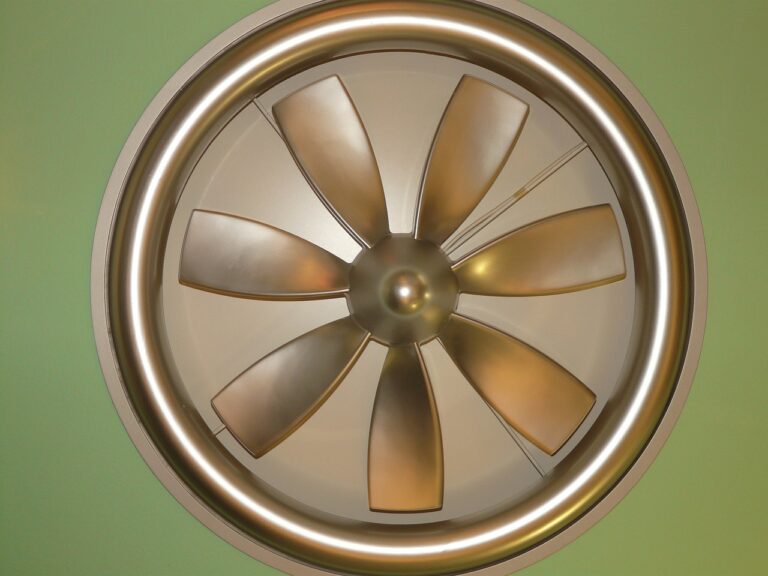The Advantages of Variable Speed Air Conditioning
When it comes to cooling your home, efficiency and precision are paramount. Variable speed air conditioning has emerged as a game-changing technology, offering a more adaptive and energy-efficient solution. This blog post explores what variable speed air conditioning is and how it revolutionizes the way we experience indoor comfort.
Variable speed air conditioning represents a leap forward in the quest for efficient and adaptable home cooling. From energy savings to enhanced comfort and improved air quality, these systems offer a comprehensive solution for homeowners seeking a cutting-edge and environmentally conscious approach to indoor climate control. Consider the advantages of variable speed technology to elevate your home’s cooling experience.
Understanding Variable Speed Technology
Understanding variable speed technology is essential to grasp the numerous advantages it brings to the realm of air conditioning, particularly in the context of variable speed air conditioning systems. Unlike traditional fixed-speed systems that operate at a constant pace, variable speed technology allows the compressor and motor to adjust their speed based on the cooling needs of the space.
One of the key advantages lies in energy efficiency. Variable speed air conditioning systems can modulate their operation to match the specific cooling requirements, avoiding unnecessary energy consumption during periods of lower demand. This adaptability not only reduces energy bills but also contributes to a more environmentally sustainable approach to home cooling.
Precision in temperature control is another notable benefit. Variable speed systems can fine-tune the cooling output, maintaining a consistent and comfortable indoor environment. This precision not only enhances comfort but also prevents temperature fluctuations, providing a more enjoyable living experience.
Improved air quality is a byproduct of variable speed technology. These systems run for more extended periods at lower speeds, facilitating better air filtration and humidity control. As a result, allergens, pollutants, and excess moisture are effectively managed, promoting a healthier indoor environment.
The longevity of the system is also positively impacted. The ability to operate at lower speeds reduces wear and tear, extending the lifespan of components and reducing the frequency of repairs. Homeowners investing in variable speed air conditioning systems can thus enjoy long-term reliability and cost-effectiveness while benefiting from a more adaptable, precise, and energy-efficient cooling solution.
Adaptive Cooling for Precision
Adaptive cooling for precision is a fundamental aspect that distinguishes variable speed air conditioning systems, presenting numerous advantages in terms of efficiency and personalized comfort. These systems are designed to dynamically adjust their cooling output, offering a tailored and precise approach to indoor climate control.
One of the primary advantages of adaptive cooling is energy efficiency. Variable speed technology enables the air conditioning system to match its speed with the specific cooling needs of the space. During periods of lower demand, the system operates at reduced speeds, consuming less energy. This adaptability not only results in significant energy savings but also aligns with environmentally conscious practices.
Precision in temperature control is a standout feature. Variable speed systems excel in maintaining a consistent and desired indoor temperature. The ability to modulate cooling output with precision prevents temperature fluctuations, providing occupants with a comfortable and stable living environment. This is particularly beneficial in regions with varying climate conditions.
The adaptive nature of variable speed air conditioning extends beyond temperature control to enhanced humidity management. By running at lower speeds for more extended periods, these systems effectively remove excess moisture from the air, contributing to improved indoor air quality and a healthier living space.
Additionally, adaptive cooling promotes quieter operation. Variable speed systems tend to operate at lower speeds, reducing noise levels compared to traditional fixed-speed counterparts. This creates a more serene and pleasant indoor environment, further enhancing the overall comfort and satisfaction of occupants.
In summary, the advantages of adaptive cooling for precision in variable speed air conditioning encompass energy efficiency, precise temperature control, enhanced humidity management, and quieter operation, collectively providing homeowners with a sophisticated and personalized approach to indoor climate control.

Energy Efficiency and Cost Savings
Energy efficiency and cost savings stand out as paramount advantages when considering variable speed air conditioning systems. Unlike traditional fixed-speed counterparts, variable speed technology offers a more adaptive and economical approach to cooling, aligning with contemporary demands for sustainability and financial prudence.
One of the key contributors to energy efficiency is the ability of variable speed systems to modulate their operation based on the specific cooling needs of the space. During periods of lower demand, the system operates at reduced speeds, consuming less energy. This adaptability ensures that the air conditioning unit doesn’t unnecessarily work at full capacity when it’s not required, resulting in substantial energy savings.
The efficiency gains translate directly into cost savings for homeowners. By optimizing energy usage and reducing overall consumption, variable speed air conditioning systems contribute to lower utility bills. Over the long term, the financial benefits can be significant, offering a return on investment as homeowners enjoy reduced energy costs while maintaining optimal indoor comfort.
Moreover, the precision in temperature control provided by variable speed technology prevents unnecessary cooling cycles and overuse of energy, further enhancing efficiency. These systems excel in maintaining a consistent indoor temperature, preventing wasteful energy expenditure associated with frequent on-and-off cycles.
In summary, the advantages of energy efficiency and cost savings associated with variable speed air conditioning make them an attractive and economical choice for homeowners. Beyond the initial investment, the long-term financial benefits, coupled with a reduced environmental impact, position variable speed systems as a wise and sustainable solution for modern indoor climate control.
Consistent Comfort Levels
Consistent comfort levels emerge as a prominent advantage of variable speed air conditioning systems, setting them apart from traditional fixed-speed counterparts. These innovative systems prioritize precision in temperature control, providing occupants with a reliable and stable indoor environment tailored to their preferences.
Variable speed technology allows these systems to modulate their operation based on the specific cooling needs of the space. Unlike fixed-speed systems that operate at a constant pace, variable speed air conditioning adjusts its speed dynamically. This adaptability ensures that the desired temperature is consistently maintained without the fluctuations commonly associated with traditional systems.
The ability to fine-tune cooling output contributes to a more enjoyable and stable living experience. Variable speed air conditioning prevents abrupt temperature changes by avoiding rapid cycling on and off, a common occurrence in fixed-speed systems. This precision is particularly beneficial in regions with varying climate conditions, ensuring that indoor comfort remains constant regardless of external factors.
Additionally, the adaptability of variable speed systems extends beyond temperature control to humidity management. By running at lower speeds for more extended periods, these systems effectively regulate moisture levels, creating a balanced and comfortable indoor environment. The result is not only consistent temperature levels but also optimal humidity control, enhancing overall comfort and well-being.
In summary, the advantages of consistent comfort levels associated with variable speed air conditioning make them an attractive choice for homeowners seeking a sophisticated and personalized approach to indoor climate control. The ability to maintain stable temperatures and humidity levels contributes to a more comfortable and enjoyable living space.
Quiet Operation
Quiet operation is a standout advantage of variable speed air conditioning systems, significantly enhancing the overall indoor environment for occupants. Unlike traditional fixed-speed counterparts that can produce noticeable noise during operation, variable speed technology allows for a more serene and peaceful cooling experience.
The design of variable speed systems prioritizes lower speeds during operation, resulting in reduced noise levels. When compared to fixed-speed systems that often operate at full capacity, variable speed air conditioning units run at varying speeds based on the specific cooling requirements. This adaptability not only contributes to energy efficiency but also ensures quieter performance, creating a more pleasant living or working environment.
The variable speed technology excels in maintaining a consistent and desired indoor temperature without the need for abrupt cycling on and off. This steady operation not only enhances comfort but also minimizes disruptive noise associated with frequent system starts and stops. The result is a more tranquil and undisturbed atmosphere within the indoor space.
The reduced noise levels make variable speed air conditioning systems particularly suitable for bedrooms, living rooms, and other areas where occupants value a quiet and peaceful environment. This feature is especially appreciated during nighttime operation, allowing residents to enjoy a restful sleep without the disturbance of a noisy cooling system.
In summary, the quiet operation of variable speed air conditioning systems offers a significant advantage, creating a more comfortable and harmonious indoor atmosphere. This feature enhances the overall satisfaction of occupants by minimizing noise disruptions while ensuring efficient and effective cooling.
Improved Air Quality
Improved air quality is a noteworthy advantage of variable speed air conditioning systems, contributing to a healthier and more comfortable indoor environment. These systems employ advanced technology to enhance air filtration, humidity control, and overall air circulation, positively impacting the quality of the air that occupants breathe.
One of the key factors influencing improved air quality is the extended run times and lower speeds characteristic of variable speed systems. By operating for longer durations at reduced speeds, these systems effectively enhance air filtration. Airborne particles, including dust, allergens, and pollutants, are continuously filtered out, leading to cleaner and fresher indoor air.
Variable speed air conditioning also excels in humidity management. The prolonged operation at lower speeds allows for more efficient moisture removal from the air. This not only prevents the growth of mold and mildew but also ensures optimal humidity levels, creating an environment less conducive to the proliferation of allergens.
Additionally, variable speed technology contributes to better air circulation throughout the indoor space. Consistent and gentle airflow helps distribute clean and conditioned air evenly, reducing stagnant air pockets and ensuring that every corner of the room receives adequate ventilation.
The overall impact on air quality goes beyond temperature control, addressing factors that directly influence respiratory health and well-being. Improved air quality is particularly beneficial for individuals with allergies or respiratory conditions, providing them with a living space that supports their health and comfort.
In summary, the advantages of improved air quality associated with variable speed air conditioning systems make them a valuable choice for homeowners seeking a comprehensive and health-conscious approach to indoor climate control.
Extended Life of Components
The extended life of components is a notable advantage of variable speed air conditioning systems, offering homeowners long-term reliability and cost-effectiveness. Unlike traditional fixed-speed counterparts that frequently cycle on and off at full capacity, variable speed technology operates more efficiently, resulting in reduced wear and tear on system components.
One key contributor to the prolonged lifespan of components is the ability of variable speed systems to modulate their operation based on the specific cooling needs. By avoiding frequent on-and-off cycles, these systems minimize stress on crucial components such as the compressor and motor. The reduced mechanical strain translates into less wear, leading to increased durability and longevity.
The adaptability of variable speed technology also contributes to energy efficiency, as the system only operates at the necessary speed to meet current demands. This results in less frequent starts and stops, further reducing the likelihood of mechanical breakdowns associated with constant cycling.
Regular maintenance is simplified with variable speed air conditioning systems due to their consistent and optimized operation. The reduced strain on components results in fewer repairs and replacements, lowering overall maintenance costs for homeowners. This long-term reliability aligns with a more sustainable and cost-effective approach to indoor climate control.
In summary, the extended life of components associated with variable speed air conditioning systems positions them as a prudent investment for homeowners. The reduced wear and optimized operation contribute to increased durability, lower maintenance requirements, and overall system longevity, providing a reliable and cost-effective solution for indoor comfort.
Smart Thermostat Compatibility
Smart thermostat compatibility stands out as a valuable advantage of variable speed air conditioning systems, offering homeowners enhanced control, energy efficiency, and convenience. The integration of variable speed technology with smart thermostats allows for a seamless and intelligent approach to indoor climate control.
One of the key benefits is the precision and adaptability in temperature management. Smart thermostats, equipped with advanced sensors and algorithms, enable users to set specific temperature preferences for different times of the day. Variable speed air conditioning systems, working in tandem with smart thermostats, can dynamically adjust their speed to meet these preferences, ensuring optimal comfort while maximizing energy efficiency.
The ability to remotely control and monitor the air conditioning system through smart devices is another notable advantage. Homeowners can adjust temperature settings, monitor energy consumption, and even receive alerts or recommendations for optimal operation—all from the convenience of their smartphones or other connected devices. This level of control not only enhances convenience but also contributes to more informed and efficient energy usage.
Energy savings are further amplified by the synergy between variable speed technology and smart thermostats. The adaptability of variable speed systems aligns with the intelligent algorithms of smart thermostats, resulting in a harmonized and optimized cooling strategy. This collaboration ensures that the air conditioning system operates at the most energy-efficient levels, minimizing unnecessary energy consumption and reducing utility costs.
In summary, the advantages of smart thermostat compatibility with variable speed air conditioning systems provide homeowners with a sophisticated and energy-conscious approach to indoor climate control. The seamless integration of these technologies offers precision, convenience, and energy savings, enhancing the overall efficiency and user experience of the air conditioning system.

